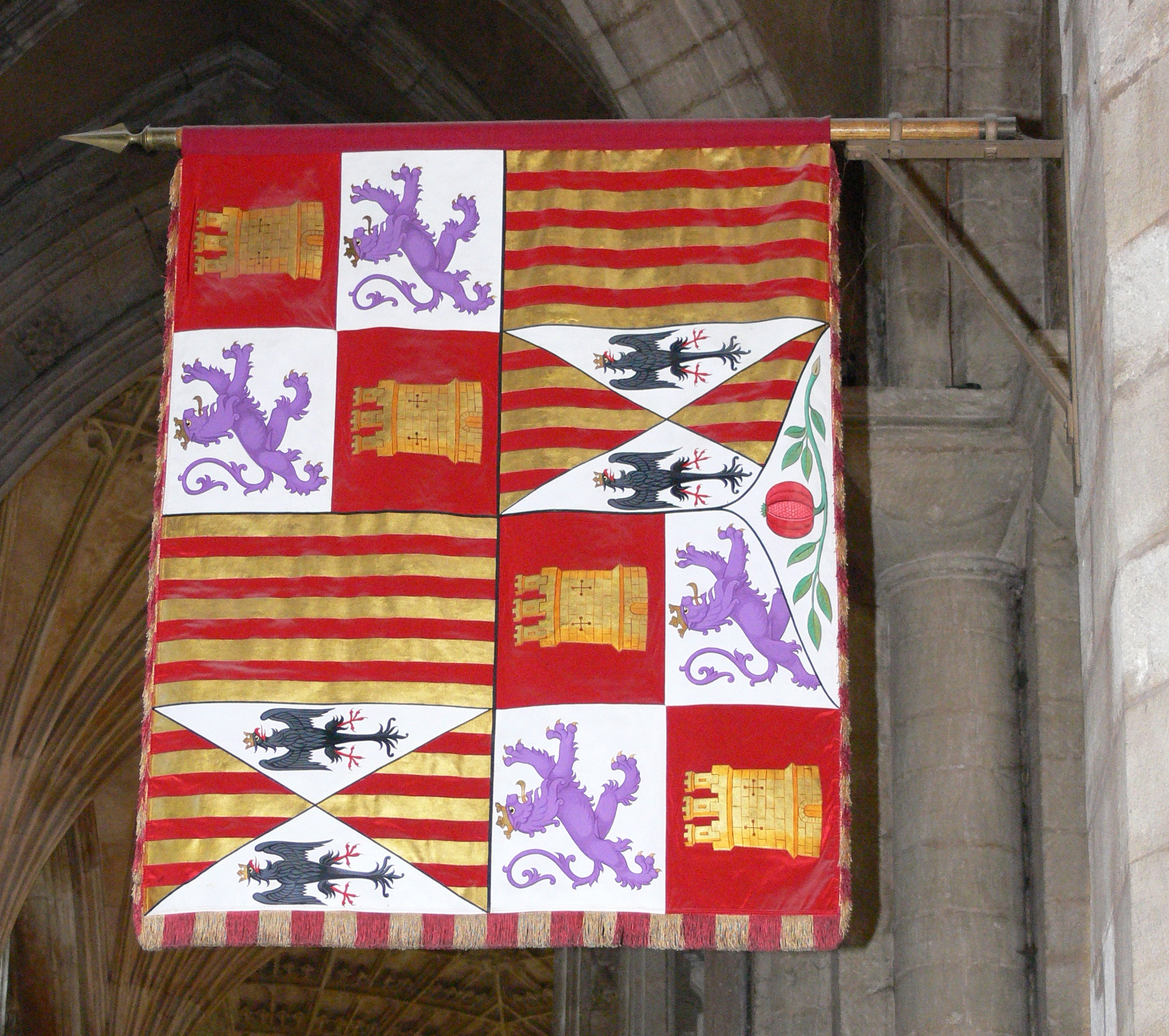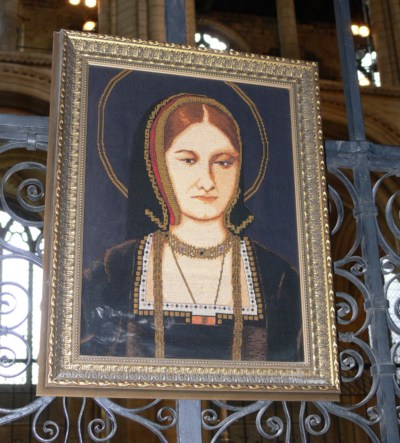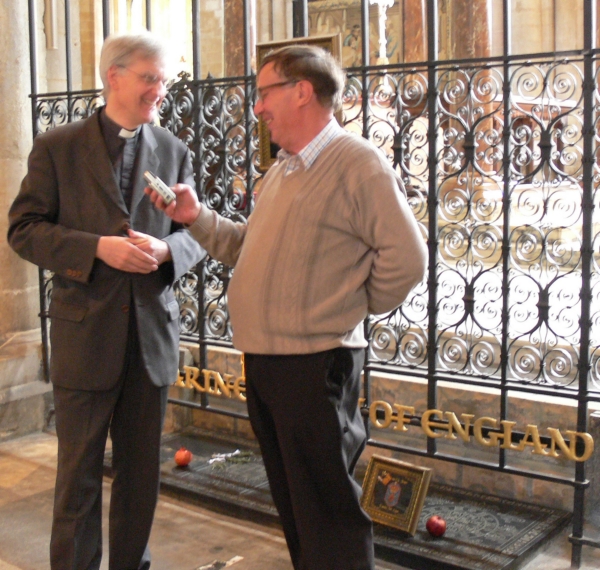Katharine of Aragon was born on 16 December 1485 at Alcalá de Henares in Spain, daughter of King  Ferdinand II and Queen Isabella. Today Alcalá de Henares is Peterborough’s Spanish twin town to celebrate this historic association.
Ferdinand II and Queen Isabella. Today Alcalá de Henares is Peterborough’s Spanish twin town to celebrate this historic association.
Katharine came to England to marry Prince Arthur, eldest son and heir of Henry VII, in November 1501 as part of a diplomatic settlement. Arthur died in April 1502 after only five months of marriage, and Katharine swore throughout her life that it had never been consummated. Katharine’s status remained uncertain, although she was appointed as the Spanish ambassador to the English court in 1507, the first woman in European history to be given such a role.
Shortly after succeeding his father to the throne, Henry VIII married Katharine on 11 June 1509, with their coronation taking place on the 24 June. Henry seems to have married his brother’s widow through some genuine affection and for dynastic reasons. Katharine was unfortunately unable to produce a living male heir, something Henry regarded as essential for the continuation of his dynasty, giving birth to six children with only one of them, the future Queen Mary I, surviving infancy.
For much of their marriage, the relationship seems to have been good; Katharine was married to Henry VIII for longer than all his other five marriages put together. She was left as Regent in his absence whilst he was away fighting in France in 1513, during which her forces defeated an attempted Scots invasion.
As was common royal practice, Henry took a series of mistresses. However, when Anne Boleyn arrived at court Henry became besotted with her. She refused to become a mistress, forcing Henry’s ‘Great Matter’: that he could only have this woman he loved and a possible male heir by her, if he could annul his marriage to Katharine.
In 1527 Henry asked Pope Clement to annul the marriage, but after much agonizing the Pope refused. The failure to get the annulment caused Henry to sack his chief minister, Cardinal Wolsey in 1530. Wolsey headed north, en route spending Easter at Peterborough Abbey.
In 1532 Henry split from Rome, being proclaimed the Supreme head of the Church in England. In May 1533 Katharine’s marriage to Henry was proclaimed invalid on the grounds of her pre-marriage to his brother being against canon law. Katharine was now referred to as the ‘Dowager Princess of Wales’ and exiled to More Manor in Hertfordshire, Buckden Towers and latterly Kimbolton Castle.
 Katharine died at Kimbolton on 7 January 1536, most likely of cancer. The King ordered that she be buried at Peterborough Abbey, the nearest great religious house that befitted her status, whilst not giving her a burial in London where she might have been politically embarrassing.
Katharine died at Kimbolton on 7 January 1536, most likely of cancer. The King ordered that she be buried at Peterborough Abbey, the nearest great religious house that befitted her status, whilst not giving her a burial in London where she might have been politically embarrassing.
Her funeral took place on 29 January 1536. The heart of the funeral cortege included a coffin wagon covered with black velvet, as were the six horses pulling it; heralds and fifty servants in black carrying torches, four banners in crimson taffeta and four golden standards. At the door of the abbey church the body was received by four bishops and six abbots and placed under a canopy lit by a thousand candles.
The Revd W. D. Sweeting, in his 1898 history of the Cathedral, said of Katharine's grave: ‘The only monument, strictly so called, of which there is any record, was a low table monument, raised on two shallow steps, with simple quatrefoils, carved in squares set diamond-wise.'
The tomb was vandalised by Oliver Cromwell’s troops in April 1643. The current memorial slab was installed in 1895 after a national campaign for the ‘Katharines of England’ to all donate a penny to the cause, organised by the wife of one of the Cathedral canons, Katharine Clayton.
Today Katharine is remembered annually with a commemorative service and series of events at the Cathedral and elsewhere in the city around the anniversary of her burial, 29 January. Many visitors place pomegranates – her heraldic symbol – on her tomb.
Listen to the story of Katharine of Aragon
Canon Jonathan Baker tells Katharine's story to John Keily of Come and See Inspirations (audio file, 3.22 mins).
 Hear how the Spanish Princess from one of the greatest royal houses in Europe became stranded in England following the death of her first husband, the teenage Prince Arthur, and how his younger brother came to her rescue and married her when he became King.
Hear how the Spanish Princess from one of the greatest royal houses in Europe became stranded in England following the death of her first husband, the teenage Prince Arthur, and how his younger brother came to her rescue and married her when he became King.
With thanks to John Keily for editing and providing this audio file.